Radeon RX Vega Launched
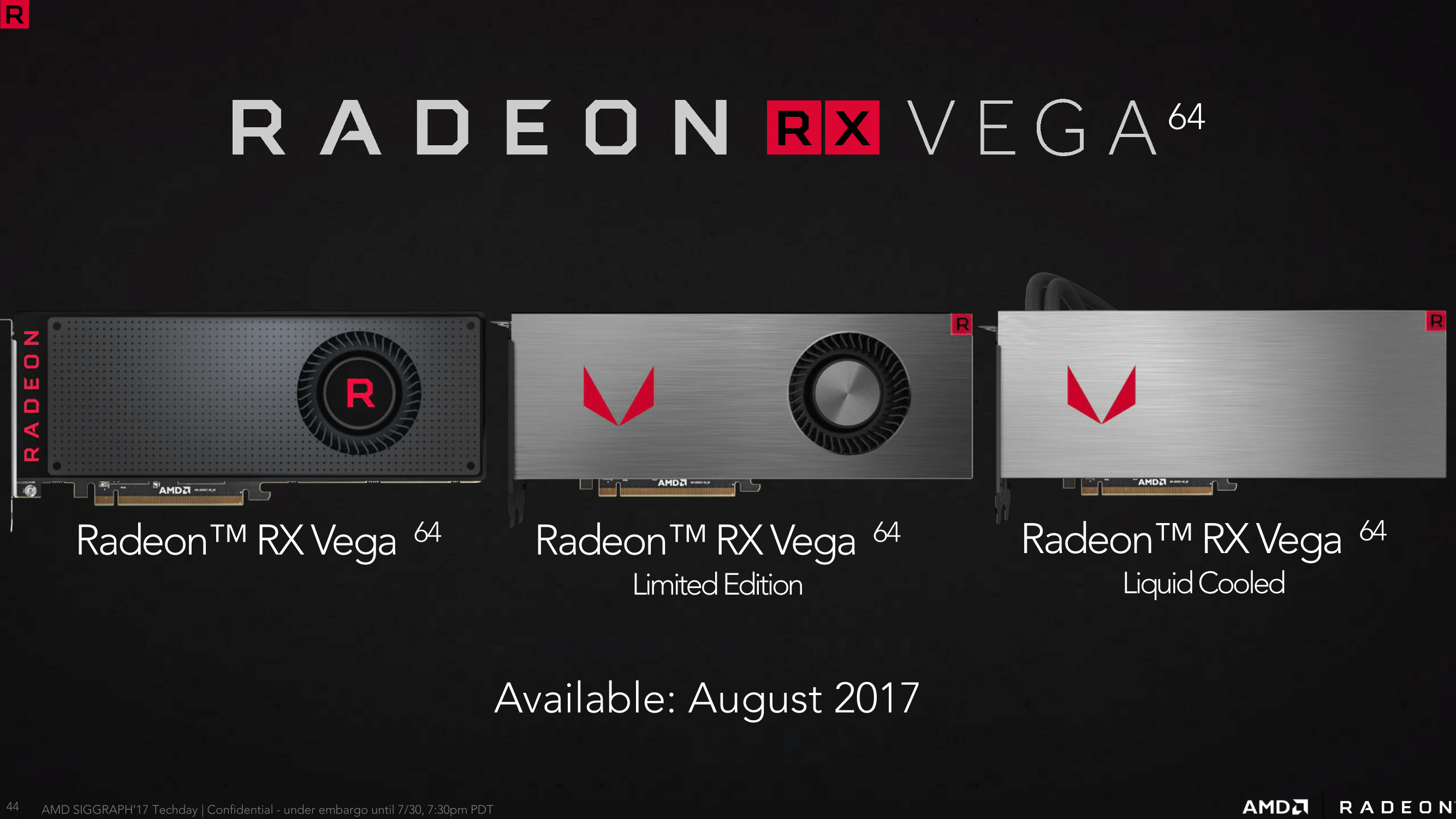
Thank god almighty, it’s here at last! It seems a little unreal, but Vega RX series has finally launched and it’s been officially released by AMD on August 14th, 2017. There are two different chips being released in the RX Vega lineup, which we previously covered with full specs and hardware details. From those two chips, we are seeing four reference cards with different pricing and bundles (we will get to bundles further down). The image above shows naming and the sleek new edgy look AMD is sporting on these new reference card. Below you will see (take with salt) some rough performance metrics measured on Ultrawide resolution (3440x1440) and averaged over 10 games. Overall, the titles chosen are good but they all tend to perform well on AMD hardware and no settings have been specified.
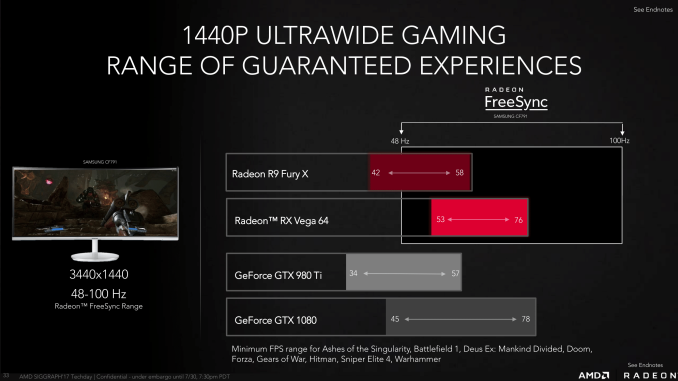
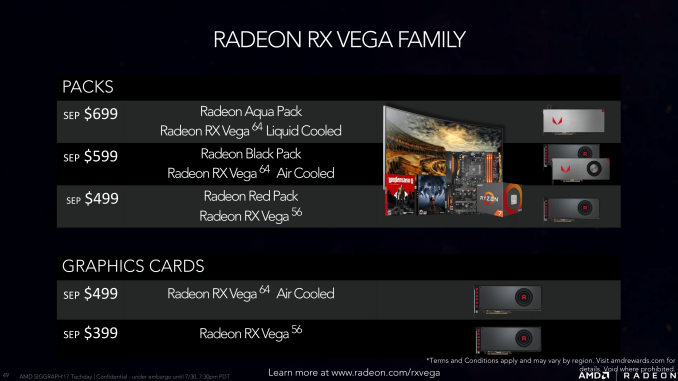
Knowing the MSRP and hardware specs give us some clues to performance, but how do these new cards and architecture measure up? Well, unfortunately we didn’t receive a card or couldn’t even find a card locally for pickup (dang it!), but we did some digging and will share a well-rounded review that was performed by AdoredTV.
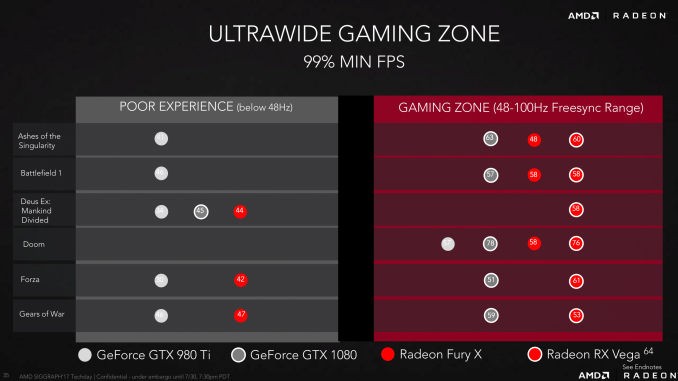
Did Vega RX land a dollar too much and a day short of being successful in the NVIDIA flooded top tier market? We have our own opinion about this, but it’s a complicated one. Honestly, not even sure where to start except the simple phrase, “Competition is good!”. Competition has never hurt consumers and I’m grateful to still have some level of competition at play in the GPU market. Because of the release of Vega RX series, we saw a reduction in prices for NVIDIA GTX 1080 and a solid entry price for NVIDIA GTX 1080 Ti series. Given the 1080 Ti’s performance, NVIDIA could have easily priced it to match or near the GTX Titan Xp series with high end users happily forking out the money. It’s this kind of benefit that competition brings and I hope everybody remembers that.
In general, RX Vega series seems to underperform compared to the marketing that was used (thinking Poor Volta) by Radeon Technology Group (RTG). It consumes too much power and has a generational leap of 20-24% performance increase from the Fury X (generally speaking). This is lower than previous generational jumps and tends to leave the masses feeling a little disappointed. I personally was hoping for more but I’m not disappointed in the offering with all aspects considered. To give my opinion and thoughts about Vega require a larger pictures and at the very least two considerations.
1. Adaptive Sync Technology
If you are considering a major upgrade (GPU and Monitor) with budget in mind, I don’t think you can really pick anything besides Radeon and FreeSync technology. NVIDIA’s GSync has its own “tax” because of a specific hardware module manufacturers are required to include. This means saving a couple hundred or more in GPU funds for a similar or equal quality display.
2. GPU
The NVIDIA GTX 1080 and AMD RX Vega are listed at similar pricing (non-liquid) and provide a similar experience (especially with Adaptive Sync). The GTX 1080 will utilize less power and provides additional software features through GeForce Experience software. Even with that, the experience is the same and your high end display for your new high end card costs hundreds less.
3. AMD FineWine Tech
All joking aside, AMD does seem to be slow out of the gate with maximizing performance on every GPU launch. If you have patience, users of Radeon Technology have always enjoyed those sweet gains through the lifecycle of their cards. On the flip side, if you don’t want to wait and you want the best at launch, NVIDIA is a constant performer at most launches and usually doesn’t disappoint.
To conclude, the higher end market for consumer grade GPUs has already been met and it was met over 12 months ago by NVIDIA with the GTX 1080 and Titan XP. I expected pricing to be a little less than the $499 tag, but it’s still not too much of a stretch given the performance and quality of the Vega RX reference models.
AIB cards are always game changers but given the Liquid edition reaching high OC and marginal FPS gains, I don’t see this adding much value or improving the image Vega RX has provided. Perhaps RX Vega was too hyped by the marketing team, RTG or that we just always want bigger and better.
From my view, RX Vega series has a place in the market, especially for those that already adopted FreeSync and wanted something to push 1440p 144FPS and greater.
Now for the AMD marketing spin…. BUNDLES! Just as I tried to explain, these RX Vega cards are best paired with a quality FreeSync display at a great price. For those who waited, it might have actually paid off. AMD is giving unique rebates for the purchase of RX Vega cards paired with Ryzen CPUs, AM4 Motherboard, FreeSync Displays and a Game Bundle. This offer by AMD is not valid in some regions, but it's still a great bundle for those waiting on full system builds or full graphic (Display+GPU) upgrades.
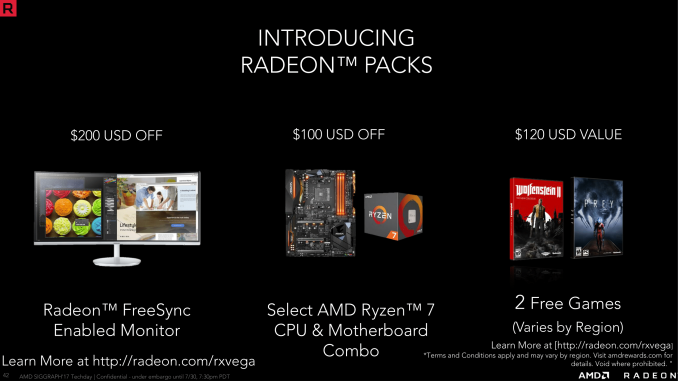
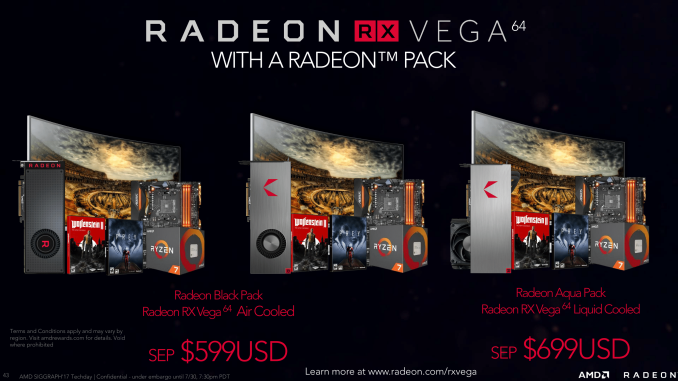
Here is a video by AdoredTV who does a fantastic job explaining my very own thoughts and concepts on the viability of the RX Vega series.

